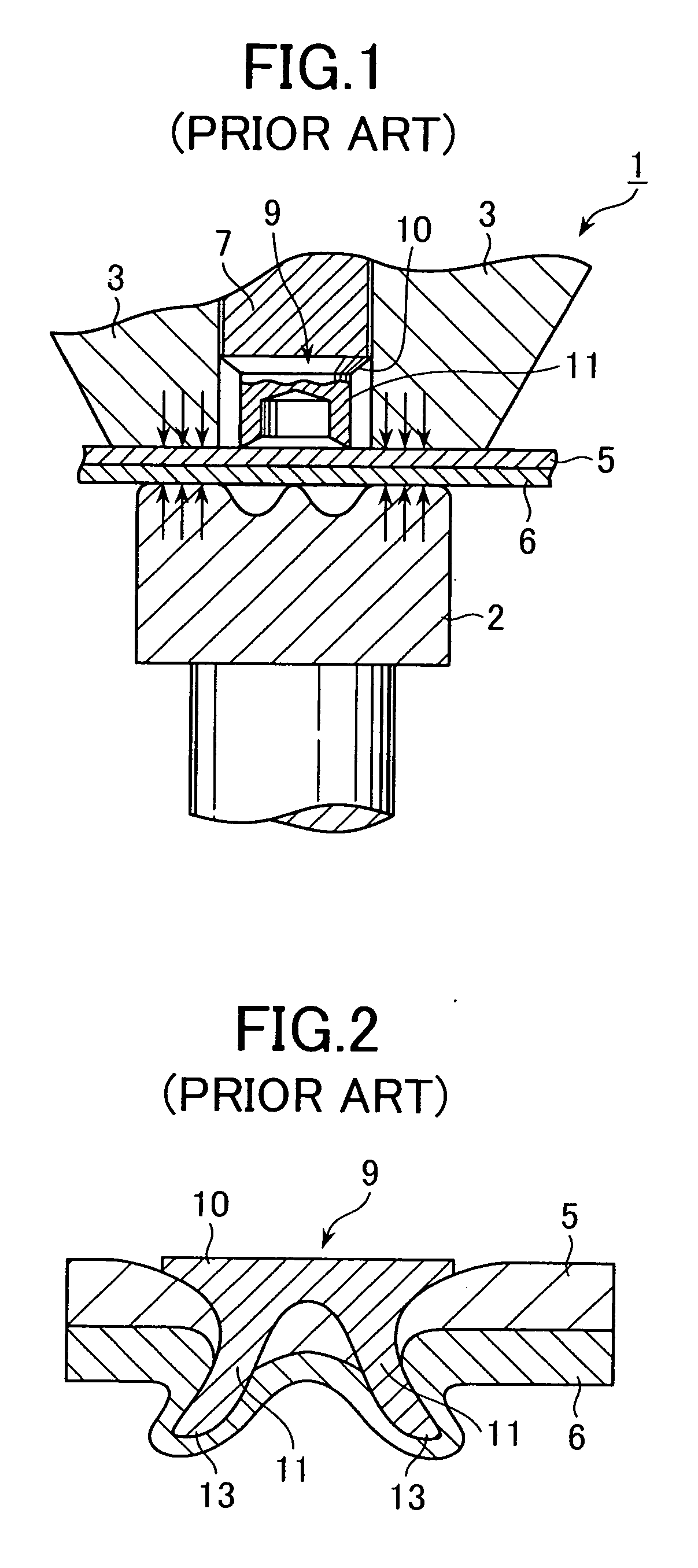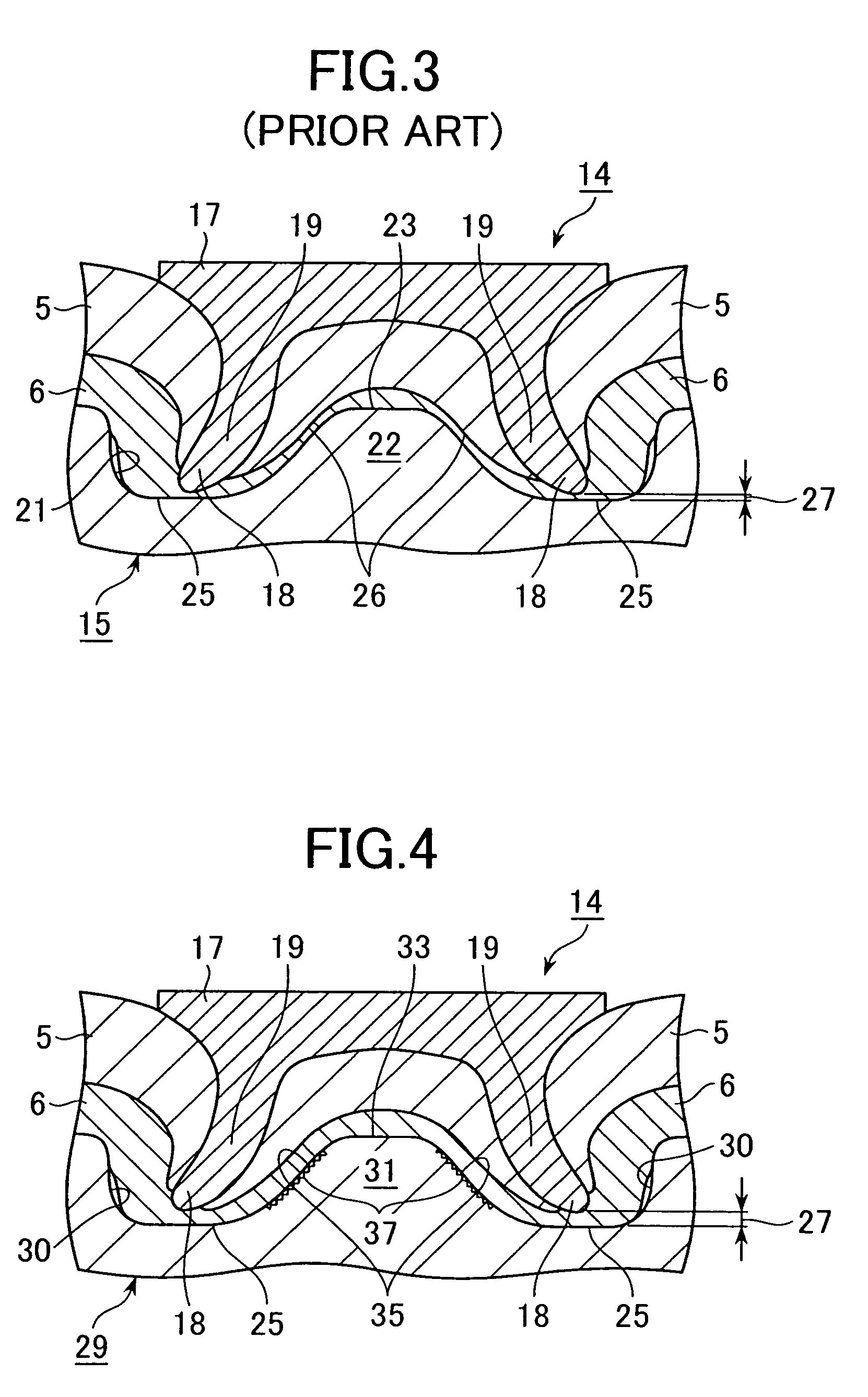Self-piercing rivet fastening device with improved die
- Summary
- Abstract
- Description
- Claims
- Application Information
AI Technical Summary
Benefits of technology
Problems solved by technology
Method used
Image
Examples
Embodiment Construction
[0026] A die in an embodiment of a self-piercing rivet fastening device of the present invention will now be explained with reference to FIG. 4 through FIG. 10 and in comparison to a die of the prior art. In FIG. 3, 14 denotes a conventional self-piercing rivet and 15 denotes a die of the prior art. The self-piercing rivet 14 has a head 17 and legs 19 whose tips 18 become deformed when driven into components 5, 6 by a punch (not shown) so as to spread the legs outward radially. The die 15, which may be made of tool steel, for example, has a cavity 21 for receiving portions of the fastened components 5, 6 forced outward by the legs 19 of the self-piercing rivet 14 driven in by the punch. The cavity 21 has a protrusion 22 at its center protruding towards the punch. The protrusion 22 has a substantially flat top 23 and an inclined surface portion 26 between the top 23 and the bottom surface 25 of the cavity. The inside surface of the cavity 21, the top 23 of the protrusion 22, the incl...
PUM
| Property | Measurement | Unit |
|---|---|---|
| Friction | aaaaa | aaaaa |
Abstract
Description
Claims
Application Information
 Login to View More
Login to View More - R&D Engineer
- R&D Manager
- IP Professional
- Industry Leading Data Capabilities
- Powerful AI technology
- Patent DNA Extraction
Browse by: Latest US Patents, China's latest patents, Technical Efficacy Thesaurus, Application Domain, Technology Topic, Popular Technical Reports.
© 2024 PatSnap. All rights reserved.Legal|Privacy policy|Modern Slavery Act Transparency Statement|Sitemap|About US| Contact US: help@patsnap.com










